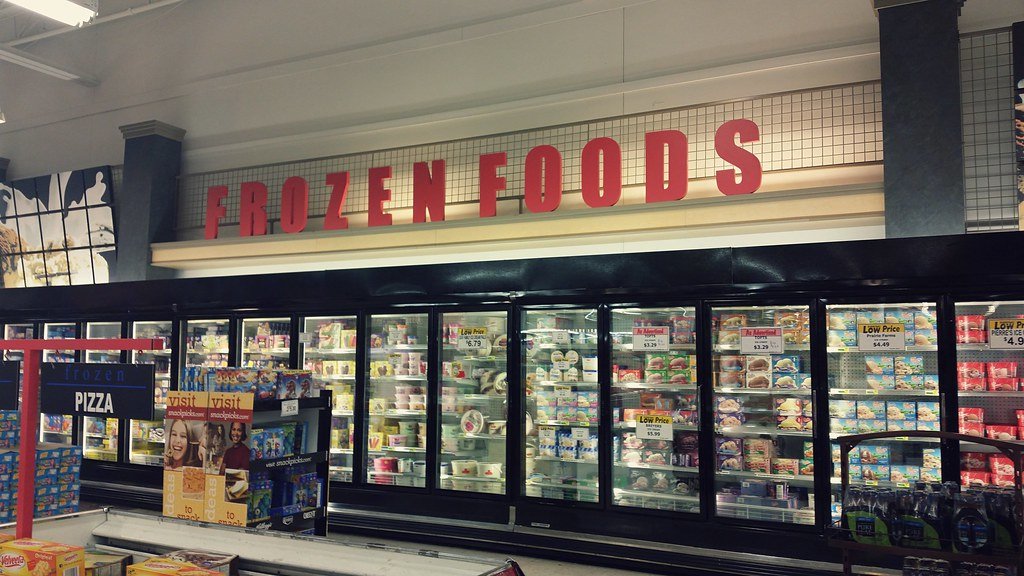Do you want to know How To Start Your Own Frozen Food Business or have an idea for a new business startup? This step-by-step guide will show you how to turn your interest into a business. We’ve covered you, from a small ice cream shop to a next-generation frozen meal.
We’ll guide you on How to Start Your Own Frozen Food Business from choosing the best ingredients to perfecting your ice cream production from the beginning! Find the secret of the flavor-creation that transforms the customers into repeat customers. Furthermore, we will also guide you on the navigation procedure through regulations and certifications that must be met for food handling and storage.
By putting into practice the ideas we will present here, you will get the skills and ability to take your frozen food business from failure to success. Therefore, sharpen your rollers, work on your cooking agent skills, and prepare for a change of fortune.
Let’s dive into frozen products and start the pathway to How to Start Your Own Frozen Food Business now!
Table of Contents
Market Research and Analysis
Careful market research and analysis are the most significant stages before entering the frozen food market. Equipped with up-to-date knowledge of market fluctuations, consumer demands, and competition, you will be ready to win a spot among the leaders.
Begin with determining your market. Is there a demand for a frozen food startup like yours? First, demographic information, including age, income, and location, should be reviewed to identify the ideal customer group. Conduct surveys, interviews, and focus groups to gather relevant data on their likes and wants.
Next, analyze your competition. In the frozen food industry, who are the key players? What are their product lines, and how do they position themselves? Learn their pricing, distribution channel strategies, and marketing strategies. This is to help you understand where your product fits and how it may differ from others.
Finally, evaluate the whole market size and market growth opportunity. Is the frozen food sector spreading? Are there any new trends and emerging market niches for which you can find opportunities? Knowing the market dynamics will help you clearly understand what the consumer wants and adjust your offerings accordingly to the market.
Creating a Business Plan for Your Frozen Food Business
Building a good business plan is crucial for any business to succeed. It acts as a blueprint, which maps out goals, strategies, and financial projections. Here are the key components to include in your frozen food business plan: Here are the key components to include in your frozen food business plan:
1. Executive Summary: Give a summary of your company, where your mission statement, target market, and unique selling proposition would be described.
2. Company Description: Let us outline your business structure, legal entity, respective partners, and critical people. Please clarify the idea behind your frozen product families and your vision for future generations.
3. Market Analysis: Provide an overview of your market research results, that is, customer demographics, competitive analysis, and market size. Describe your market segments and tell your audience how your products will answer their needs.
4. Product Line: Specify the frozen food product lines you plan to provide, including flavor, ingredients, and packaging. Showcase any unique characteristics or superiority that differentiate your products from other brands.
5. Marketing and Sales Strategy: Develop a marketing strategy comprising branding, pricing, distribution channels, and marketing initiatives. Articulate your sales strategy and point towards the consumers you want to reach.
6. Operations and Management: You may also consider the day-to-day operations of your business, such as sourcing ingredients, production processes, and quality control measures. Let’s begin by introducing our managers and their responsibilities.
7. Financial Projections: Create a comprehensive financial projection reflecting sales estimates, costs, and profitability percentages. Provide the break-even analysis and the cash flow statement to show your business’s economic feasibility.
8. Funding Request: If you need help from external lending institutions, specify the quantum required and how you intend to use the money. You are to know the current status of the payment plans and the possible collaterals.
9. Appendices: Add any further backup, for instance, licenses, permits, supplier deals, and market research reports.
Choosing The Right Location And Equipment
The location of your food business is one of the most critical factors. Consider the following factors when selecting a suitable location: Consider the following factors when choosing a convenient location:
1. Accessibility: Identify a conveniently located place for your clients. If you determine to accommodate consumer sales, identify a busy and visible area. As long as your focus is on distribution wholesale, being near transportation hubs and storage facilities is a must-have.
2. Zoning and Regulations: Make sure that the site is situated in the permitted areas for food businesses’ operations. Review the guidelines by the health department for frozen food and set a precedence.
3. Space and Layout: To determine the space requirements for your frozen food business, assess them. Think of the planned storage capacity of your products and any other equipment, such as freezers, refrigerators, and food preparation areas. Optimize the floor layout for a seamless indoor workflow and internal logistics.
4. Cost: Budget is essential. You should assess the affordability of different locations according to your budget. Remember that the rent is not the only cost you need to deal with; you also need to deal with other expenses, like utility bills, maintenance, and insurance. Evaluate multiple choices and arrive at an educated choice.
Selecting The Right Equipment
Besides the location, choosing the right equipment is also crucial for your frozen food company.
1. Freezers and Refrigeration: Invest in expensive freezers and refrigeration units to ensure the safe and quality storage and preservation of your frozen food products. Look at the capacity, the energy efficiency, the temperature control, and the maintenance ease.
2. Food Preparation Equipment: Concerning your product line, you will specifically need equipment for food preparation, like mixers, blenders, and ovens. Selecting the equipment from a reputable and long-lasting brand that matches your production needs is critical.
3. Packaging Machinery: If you package your frozen food products in-house, think about allocating some capital for packaging equipment—automated packaging equipment improves efficiency and maintains high uniformity of the packages.
4. Safety and Hygiene Equipment: Ensure food safety and hygiene by putting sanitary gear in the kitchen, such as gloves, hairnets, aprons, and sanitizing stations. Follow the industry’s best health and safety practices to create a decent and safe working environment.
The right location and equipment are carefully chosen for your business, and these form the foundation for the smooth operation of your frozen food business.
Sourcing Ingredients And Suppliers
The quality of the ingredients used in your frozen food products is responsible for their taste, texture, and overall look and feel.
1. Research and Identify Suppliers: Undertake in-depth research to determine which ingredient suppliers are available. The search for suppliers who deal with frozen food ingredients and are known for quality and reliability should be initiated. Attend trade shows in your industry and contact other frozen food manufacturers to capture their recommendations.
2. Quality Assurance: Give more attention to suppliers who understand the importance of quality control and have certifications like Hazard Analysis and Critical Control Points (HACCP). Request samples of their ingredients to evaluate and establish their quality and suitability for your products.
3. Supplier Audits: Conduct frequent supplier audits to ensure compliance with quality standards and regulatory requirements is maintained. Assess their manufacturing processes, storage facilities, and handling practices. Keep the communication open and timely address any concerns that may arise.
4. Local and Sustainable Sourcing: A good idea is sourcing ingredients locally to support the local community and reduce transport costs. Work with local farmers, fishers, and food co-ops. Emphasize sustainability by picking suppliers who follow ethical practices and respect the environment.
5. Supply Chain Management: Establish open communication and timeframes with your suppliers. Store orders, deliveries, and inventory records are correctly updated. Put an inventory management system in place to curb waste and have a regular supply of the ingredients.
Developing Your Product Line
The sales volume of your frozen food depends much on how attractive and good the products are.
1. Identify Your Niche: Identify your unique selling proposition and ideal audience. Is there, in fact, a market gap in the frozen food sector for a specific product? Consider features like taste, eating habits, comfort, and social trends.
2. Menu Development: Try different flavors, add-ons, and cooking methods to form a menu that represents your brand. Executing taste tests and receiving feedback from potential customers to improve your recipes.
3. Seasonality and Trends: Stay on top of seasonal trends and incorporate them into your product development. To create urgency and novelty, create limited flavors or special editions.
4. Packaging and Portion Sizes: Think about the ease of use and the design of your packaging. Freezer-friendly, durable, and visually appealing packaging materials are the best choice.
Provide different portion options to meet customers’ changing needs and preferences.
5. Quality Control and Shelf Life: Strict quality control mechanisms must be adopted to ensure consistent product quality. Conduct periodic sensory evaluations and shelf-life testing to ensure the products are in the best condition.
6. Innovation and R&D: Always be involved in research and development to outplay competitors. Try to use different ingredients, cooking methods, and packaging innovations. Promote customer feedback and make modifications based on their advice for product improvement.
Branding And Packaging For Your Frozen Food Products
Superior branding and captivating packaging are crucial for a company’s success in a competitive market because they generate customer focus and brand loyalty.
Here’s how to develop a compelling brand identity for frozen food products. Here’s how to create a clear brand identity for your frozen food products:
1. Define Your Brand Personality: Focus on your brand’s central values, mission, and USP. Are you everything bags, plus affordability, premium quality, or sustainability? Bring your brand personality to the light to establish communication and marketing processes.
2. Logo and Visual Identity: Form a logotype that deserves its place on your brand and attracts its customers. Create a consistent and unique visual identity with colors, fonts, and images to build brand recognition.
3. Packaging Design: Invest in professional package design that demonstrates your brand identity and reflects your product positioning. Yet another critical component in determining the pricing of your product is the functionality, aesthetics, and user-friendliness of your packaging. Ensure you win customer confidence by including product information, nutritional facts, mandates, or awards.
4. Storytelling and Brand Communication: Develop a compelling brand narrative that communicates profoundly and emotionally with the consumer. Using different communication channels like social media, blog articles, and product descriptions, share your brand’s journey, how the values are incorporated, and what quality assurance the brand offers.
5. Brand Partnerships and Collaborations: Work with businesses in the same industry or influencers to drive more traffic and widen your market reach. Consider making co-branding or joint marketing campaigns with companies that share the same set of values as you.
Recall that branding is not just about aesthetics; it is about creating a lasting impression that is relatable and objective for your customers.
Marketing And Promoting Your Frozen Food Business
Marketing and promotion are vital in helping firms succeed in the competitive frozen food industry.
1. Digital Marketing: Build a good reputation online with a friendly website and active social media. Optimize your website for the search engines (SEO) to create organic traffic. Develop exciting content, such as blog articles, recipes, and backstage videos, to attract and keep customers.
2. Social Media Marketing: Use social media platforms, for example, Facebook, Instagram, and Pinterest, to advertise your products and talk to your potential customers. Run targeted ads, partner with influencers, and tap into user-generated content to elevate your brand online.
3. Email Marketing: Develop a list of customers and potential prospects for significant events and sales promotions. Send regular newsletters periodically with product updates, discounts, and helpful content. Personalize your emails depending on the customer’s tastes and buying records.
4. Sampling and Tastings: Offer product samples at local grocery stores, farmers’ markets, or food festivals to allow potential customers to meet your frozen products. Engage in tastings and provide recipes or ways to serve the food to demonstrate the variety of your products.
5. Loyalty Programs and Referral Incentives: Other ways of driving sales are rewarding repeat customers and encouraging referrals through loyalty programs and incentives. Provide discounts, access to new flavors exclusively, or freebies when purchase frequency increases or successful referrals are made.
6. Partnership with retailers and food service establishments: Connect with local stores, supermarkets, and eating establishments to increase your distribution network. Offer niche products or join with other brands on co-branded promotions to attract new shoppers.
7. Public Relations and Media Outreach: Create linkages with the local media, bloggers, and food influencers. Pitch a story, product launch pack, or unique recipes to create media attention and brand awareness.
Setting up Distribution and Logistics
Efficient distribution and logistics are critical to help frozen food products get to customers in the best possible condition.
1. Distribution Channels: Put the distribution policy in place based on your target market and product line. The choices include selling directly to consumers through the website, retail shop, or food services. You can also partner with local retailers or supply food service establishments.
2. Cold Chain Management: Maintain the quality of your frozen processed food by having an excellent cold chain management system. Ensure the cold chain is temperature-controlled throughout the production and delivery chain. Temperature data is routinely monitored and recorded to ensure food safety requirements.
3. Transportation and Packaging: Choose reputable transport partners that are experts in deep-frozen goods. Optimize packaging to minimize product risks of being damaged during shipping. Use thermal packaging materials such as coolers or insulated containers to maintain the desired temperature.
4. Inventory Management: Establish an effective inventory management system to handle stock levels, control expiries, and simplify order delivery. Apply such technology tools as barcoding or RFID systems to automate the process of inventory tracking and avoid mistakes.
5. Order Fulfillment and Delivery: Implement efficient order fulfillment procedures to guarantee that customers receive their items as scheduled and free from any errors. Think of providing flexible delivery options, for example, home delivery or pick-up at a convenient point, that cater to different customer needs.
Conclusion: How to Start Your Own Frozen Food Business
In summary, launching a frozen food business takes in-depth strategic thinking and a lot of patience. First, you should study the market, identify the need, and see what people want. Next, you devise a plan for your business, deciding what kind of food you’ll sell and how you will do it. The right place and equipment, too, are essential.
You must find the right ingredients and suppliers and ensure your food tastes good and is safe. Building a solid brand and advertising in different channels is the secret. Then, you must decide how to deliver food to your customers effectively. With these steps, you can establish your own frozen food business; we hope you can succeed.
Follow Probusinesshacks for more startup business guides!







